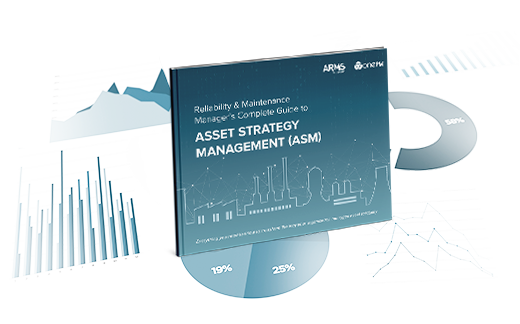There seems to be a lot of talk recently about industry 4.0 and what it means for reliability and maintenance, and as with any technological advancement, the term is synonymous with growth and improved business operations.
But, how does Industry 4.0 impact the decisions Reliability and Maintenance Leaders are making, and how are organizations adapting to it in our new digital age?
Our Marketing Specialist, Kelsey David, interviews Stephen Reeve, General Manager of Operations for ARMS Reliability EMEA, to learn more.
What is the traditional approach to asset management and what challenges is it causing for organizations?
Traditionally, organizations approach asset management from a project perspective (periodic strategy reviews, for example) rather than asset management being a process. Also, because some platforms are trying to be all things to all men, there is functionality in some applications that is an add-on, capable of doing certain tasks such as RCM. These, however, should be done in dedicated tools that can then interface with other platforms that organizations must ensure data changes are effectively deployed, implemented, and tracked.
The term ‘industry 4.0’ seems to be everywhere in the asset management field. How do you see industry 4.0 changing reliability and maintenance?
Industries have always had data which they haven’t used to make effective decisions about the assets they manage. They have numerous disparate systems where data resides and traditionally, anything done with that data has been project based following deterioration in asset performance.
With industry 4.0, we can now make data-driven decisions based on various systems being interconnected, such as your asset health monitoring, your EAM system, as well as your strategy development platform. With these systems being able to talk to each other, you can separate “business as usual” data which can be normalized, as compared to data that highlights exceptions and poor asset performance.
In your region specifically, how are you seeing clients adapt to this new wave of digital advancement?
Certainly, in the EMEA region, many organizations are talking about industry 4.0, although, majority try to approach it from an asset health monitoring perspective rather than basing decisions on the initial maintenance strategy. The maintenance strategy should be the platform from which all other decisions are taken.
Additionally, many organizations have operations that are based in the EMEA region but then have other locations with the same assets, equipment and challenges. By approaching asset management in a digital manner, these organizations can leverage best-practice and have assets performing consistently across every facility.
How does ARMS Reliability approach industry 4.0 and digital asset management?
Since I joined ARMS Reliability 4 years ago, the clients I’ve worked with in the EMEA region have asked us to support them as they embrace the new digital world. With the experience ARMS has, we’ve pioneered Asset Strategy Management which incorporates all of the elements required by organizations to make the most of the data they have, the people they have, and the experience of operating their unique assets.
Through ASM, we have connected various technologies our clients have already invested in and are helping them leverage best-practice, whether that be during the initial build phase of a project when they need to deploy changes to their asset strategies, or when they need to sustain their operations (where ASM offers true value by maximizing availability and the reliability of critical assets).
Explain how optimized maintenance strategies can support broader asset management process?
Organizations face challenges when there is change and different demands are made of the assets that they operate. For example, if an issue is seen where new tasks are required as part of a pump maintenance strategy, the process to deploy this change is manual and time consuming.
An ASM process, however, can deploy and sustain that strategy change in a digital and automated manner across every pump that’s impacted by the change.
The organizations we’ve worked with to develop the ASM processes have shown that they know what best strategies are and the necessary role they play in being able to get the most out of their assets at a given point in time.
To learn more about ASM download The Complete Guide to Asset Strategy Management or develop the skills required to set up an ASM process at your organization in one of our upcoming ASM for Reliability Leaders training course.


